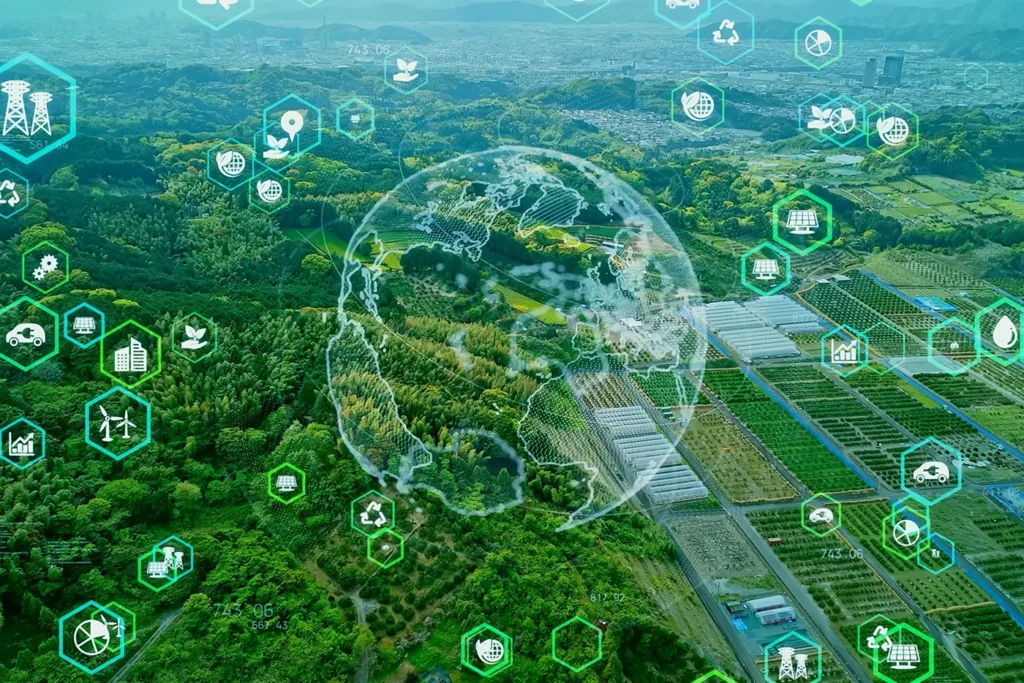How Climate Change Will Shape Future Urban Planning
Climate change is one of the most pressing issues of our time. It impacts every aspect of our lives, including how we design and build our cities. As temperatures rise and weather patterns become more unpredictable, urban planning must adapt to these new challenges. This blog explores how climate change will shape the future of urban planning and what steps cities are taking to address these challenges. We will discuss strategies for sustainable development, infrastructure improvements, and the role of technology in creating resilient cities.
The Impact of Climate Change on Urban Areas
Climate change affects urban areas in several profound ways. Higher temperatures, more frequent extreme weather events, and rising sea levels all pose significant risks to urban environments. These changes require cities to adapt quickly to mitigate the impacts and ensure their infrastructure and communities can thrive in the face of these new realities.
Rising Temperatures
Urban areas experience higher temperatures than rural areas due to the “urban heat island” effect. This phenomenon occurs because cities have more concrete, asphalt, and buildings that absorb and retain heat. As global temperatures rise, this effect intensifies, leading to hotter cities. Higher temperatures increase energy consumption for cooling, strain public health systems, and worsen air quality. Consequently, cities must develop strategies to manage and reduce these effects effectively.
Extreme Weather Events
Climate change leads to more frequent and severe weather events, such as hurricanes, floods, and heatwaves. Cities must prepare for these events by improving their infrastructure and response systems. Extreme weather can cause significant damage to buildings, disrupt transportation, and impact the economy. To address these risks, urban planners need to incorporate resilience measures into their designs, ensuring that infrastructure can withstand and recover from such events.
Rising Sea Levels
Many cities are located along coastlines, making them particularly vulnerable to rising sea levels. Melting polar ice caps and thermal expansion of seawater contribute to this rise. Coastal cities face increased risks of flooding, erosion, and saltwater intrusion. Urban planning must incorporate measures to mitigate these risks, such as constructing sea walls, enhancing drainage systems, and designing flood-resistant infrastructure. These measures are essential for safeguarding coastal communities and preserving valuable land.

Strategies for Sustainable Urban Development
Sustainable urban development focuses on creating cities that are resilient to climate change while minimizing environmental impact. Several strategies can help achieve this goal and ensure that urban areas remain livable and functional despite the challenges posed by climate change.
Green Infrastructure
Green infrastructure involves using natural systems to manage water, reduce heat, and improve air quality. Examples include green roofs, urban forests, and permeable pavements. Green roofs help insulate buildings and reduce stormwater runoff, while urban forests provide shade, improve air quality, and enhance biodiversity. Permeable pavements allow rainwater to seep into the ground, reducing flooding and promoting groundwater recharge. By integrating green infrastructure into urban design, cities can create more sustainable and resilient environments.
Energy-Efficient Buildings
Energy-efficient buildings are crucial for reducing energy consumption and greenhouse gas emissions. Urban planners are increasingly incorporating energy-efficient design principles into new construction and renovations. These principles include using high-performance insulation, energy-efficient windows, and renewable energy sources like solar panels. Additionally, smart building technologies can optimize energy use and improve occupant comfort. Implementing these practices not only helps reduce the carbon footprint but also lowers operating costs and improves building performance.
Sustainable Transportation
Transportation systems contribute significantly to greenhouse gas emissions. To address this, cities are promoting sustainable transportation options. Public transit, cycling, and walking are encouraged as alternatives to driving. Investments in electric vehicle infrastructure and car-sharing programs also help reduce emissions. Urban planners are designing cities to be more walkable and bike-friendly, with safe routes and convenient public transit options. By promoting sustainable transportation, cities can reduce their reliance on fossil fuels and improve overall mobility.
Resilient Urban Planning
Resilient urban planning involves designing cities to withstand and recover from climate-related stresses. This includes building infrastructure that can withstand extreme weather events and implementing emergency response plans. Resilient cities prioritize flexibility and adaptability, allowing them to respond effectively to changing conditions. For example, modular and temporary structures can provide quick solutions during emergencies. By focusing on resilience, urban planners can ensure that cities remain functional and safe in the face of climate-related challenges.
Infrastructure Improvements for Climate Resilience
Infrastructure improvements are essential for building climate-resilient cities. Several key areas require attention to ensure urban infrastructure can withstand the impacts of climate change. By investing in these areas, cities can enhance their ability to manage risks and adapt to changing conditions.
Flood Management Systems
Effective flood management systems are crucial for protecting cities from rising sea levels and heavy rainfall. Cities are investing in advanced drainage systems, flood barriers, and retention ponds to manage stormwater. Additionally, incorporating natural solutions, such as wetlands and floodplains, can help absorb excess water and reduce flood risks. By implementing comprehensive flood management strategies, cities can reduce the impact of flooding and protect communities from damage.
Heat Mitigation Strategies
To combat the urban heat island effect, cities are implementing various heat mitigation strategies. Increasing green spaces, such as parks and urban forests, helps cool the environment. Reflective and cool roofing materials can reduce heat absorption in buildings. Additionally, designing cities with shade and ventilation in mind can help lower temperatures and improve comfort. These strategies are essential for reducing the impacts of heat and creating more comfortable urban environments.
Energy Resilience
Energy resilience ensures that cities can maintain power during extreme weather events and other disruptions. Cities are investing in decentralized energy systems, such as microgrids and renewable energy sources, to enhance reliability. Battery storage systems and backup generators provide additional support during outages. Smart grid technologies also help manage energy distribution and improve efficiency. By focusing on energy resilience, cities can ensure a stable and reliable power supply during emergencies.
Building Codes and Standards
Updating building codes and standards is essential for ensuring new construction meets climate resilience criteria. Building codes should include requirements for energy efficiency, flood resistance, and structural integrity. Regularly revising these codes to incorporate the latest research and technology helps ensure that buildings are prepared for future climate conditions. By adhering to updated codes and standards, cities can ensure that new developments are resilient and sustainable.

The Role of Technology in Urban Planning
Technology plays a crucial role in shaping the future of urban planning. Advances in technology can improve the efficiency and effectiveness of climate adaptation and mitigation strategies. By leveraging these technologies, cities can enhance their ability to manage climate-related challenges and create more resilient urban environments.
Data-Driven Planning
Data-driven planning involves using data and analytics to inform decision-making. Geographic Information Systems (GIS) and remote sensing technologies provide valuable insights into environmental conditions, infrastructure performance, and population trends. Urban planners can use this data to identify vulnerabilities, plan for future growth, and optimize resource allocation. Data-driven planning helps cities make informed decisions and develop effective strategies for climate adaptation.
Smart Cities Technologies
Smart cities use technology to enhance urban management and improve quality of life. Sensors and Internet of Things (IoT) devices collect real-time data on various aspects of city life, including traffic, air quality, and energy usage. This data helps cities make informed decisions and respond quickly to emerging issues. For example, smart traffic management systems can reduce congestion and emissions, while smart energy grids can improve efficiency and reliability. By adopting smart city technologies, cities can enhance their ability to manage resources and improve overall livability.
Artificial Intelligence and Machine Learning
Artificial Intelligence (AI) and Machine Learning (ML) are transforming urban planning by providing advanced tools for analyzing data and predicting future trends. AI algorithms can identify patterns and make predictions about climate impacts, infrastructure needs, and resource consumption. This enables urban planners to develop more accurate and effective strategies for climate adaptation and mitigation. AI and ML also help cities optimize operations, improve decision-making, and enhance overall efficiency.
Public Engagement and Education
Engaging the public and educating citizens about climate change and sustainable practices is essential for successful urban planning. Technology can facilitate this engagement through online platforms, interactive tools, and virtual simulations. Public participation in planning processes helps ensure that community needs and preferences are considered, leading to more effective and widely accepted solutions. By fostering public engagement and education, cities can build support for climate adaptation initiatives and promote sustainable behaviors.

Conclusion
Climate change is reshaping the future of urban planning, driving the need for innovative and resilient solutions. By adopting strategies for sustainable development, investing in infrastructure improvements, and leveraging technology, cities can better prepare for the challenges ahead. The transition to climate-resilient urban areas will require collaboration, creativity, and commitment from all stakeholders. As we face the impacts of climate change, it is essential to embrace these changes and work towards creating cities that are not only sustainable but also adaptable and resilient. Through thoughtful planning and proactive measures, we can build a future where urban areas thrive in harmony with the environment.
By prioritizing sustainability and resilience, cities can safeguard their communities, protect natural resources, and ensure a high quality of life for current and future generations. As we look ahead, it is clear that climate change will continue to shape urban planning, and it is our responsibility to rise to the challenge and build a more resilient and sustainable future.

